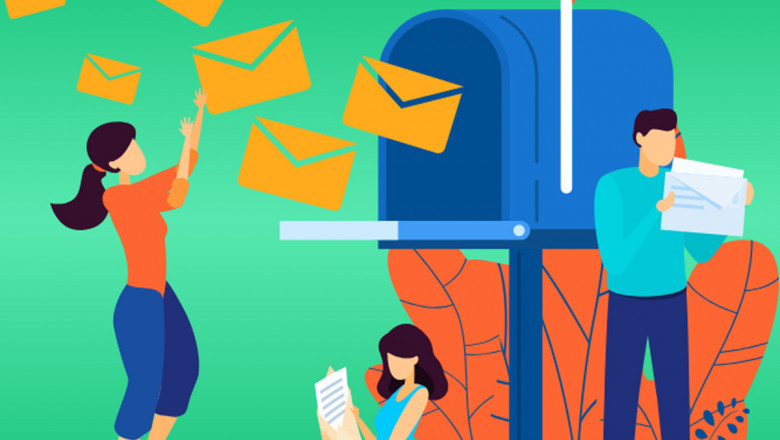views
Introduction
In today’s digital-first world, email marketing remains one of the most powerful tools for brands seeking to build lasting relationships with their audiences. However, simply sending emails is no longer enough. The true measure of success lies in email engagement the actions your recipients take after receiving your message. Do they open it? Click it? Respond? Share it?
Marketers must go beyond just sending newsletters. Instead, they should focus on sparking meaningful interaction. This article outlines proven, actionable strategies to master email engagement in the modern marketing landscape.
1. Start with a Strong First Impression: Subject Lines That Convert
Your subject line is the gateway to your content. It must be compelling enough to capture attention instantly. Studies show that 47% of recipients decide whether to open an email based on the subject line alone.
Tips for high-engagement subject lines:
- Use curiosity-based language.
- Include numbers or time-limited offers.
- Personalize using the recipient’s name or location.
- Keep it under 60 characters for mobile friendliness.
Example:
- Bad: “Weekly Newsletter”
- Good: “🔥 Just for You: 3 Email Hacks to Boost Open Rates”
A/B test your subject lines regularly to determine what resonates best with your audience. Over time, this small tweak can lead to significant increases in email engagement.
2. Personalize Beyond the Name
Personalization should go beyond merely using the recipient's name. Behavioral segmentation allows you to tailor content based on past actions, preferences, and stage in the buyer’s journey.
Effective personalization strategies:
- Send product recommendations based on previous purchases.
- Use dynamic content blocks to show different visuals or messages.
- Segment lists by demographics, job title, or interests.
The more relevant your email is, the more likely it is to generate engagement. This approach leads to better email engagement metrics like open rate, click-through rate, and conversions.
3. Optimize for Mobile Devices
Over 60% of emails are opened on smartphones or tablets. If your email doesn’t display correctly, you risk losing a large portion of your audience instantly.
Mobile optimization checklist:
- Use responsive email templates.
- Keep subject lines short.
- Use large fonts and buttons for easier navigation.
- Avoid heavy images that load slowly.
A mobile-optimized email not only improves user experience but also directly contributes to higher email engagement.
4. Use Clear and Compelling Calls-to-Action (CTAs)
Every email should have a purpose, and that purpose should be crystal clear to your audience. A strong CTA guides readers on what to do next click, reply, buy, or share.
CTA best practices:
- Place your CTA above the fold.
- Use action-oriented verbs like “Download,” “Get Started,” or “Discover.”
- Limit emails to one primary CTA to avoid decision fatigue.
Consistent use of engaging CTAs encourages your subscribers to take action, improving your email engagement rates significantly.
5. Test, Analyze, and Improve
Testing is key to optimizing your campaigns. Regular A/B tests on subject lines, visuals, CTA buttons, and send times allow you to make data-driven improvements.
Key metrics to monitor:
- Open Rate
- Click-Through Rate (CTR)
- Bounce Rate
- Unsubscribe Rate
- Conversion Rate
By testing and refining your email campaigns, you make it easier to meet your audience’s needs resulting in better email engagement and stronger ROI.
6. Clean Your Email List Regularly
An outdated or bloated email list can do more harm than good. Sending emails to inactive users decreases your sender reputation, lowers deliverability, and hurts engagement.
Tips to maintain list hygiene:
- Remove unengaged subscribers after 3–6 months.
- Run re-engagement campaigns before removing them.
- Use double opt-in to verify new subscribers.
A clean list ensures your emails land in active in boxes, ultimately boosting your email engagement metrics.
7. Create Valuable, Shareable Content
To foster high email engagement, your content must be valuable and worth sharing. People engage with content that solves problems, teaches something new, or entertains them.
Types of high-engagement content:
- Exclusive insights and industry reports
- Tutorials and how-to guides
- Early-bird product launches and discounts
- Interactive content like polls and quizzes
If your subscribers find your content helpful, they’re more likely to engage with it and even forward it to others.
8. Time It Right: Send Emails When Engagement Is Highest
Timing plays a critical role in email engagement. Emails sent during peak engagement hours are more likely to be opened and acted upon.
Best times to send emails:
- Midweek (Tuesday to Thursday)
- Between 9:00 AM and 11:00 AM or 1:00 PM to 3:00 PM
Use your email platform’s analytics to determine when your audience is most active and schedule accordingly.
Conclusion
Mastering email engagement isn’t about using tricks it’s about understanding your audience, delivering value, and staying consistent. With personalized content, mobile optimization, clean lists, and compelling CTAs, you can significantly improve how your audience interacts with your emails.
Keep refining your strategy, testing your content, and listening to your subscribers. The result? A powerful email marketing channel that drives long-term business growth.






















Comments
0 comment